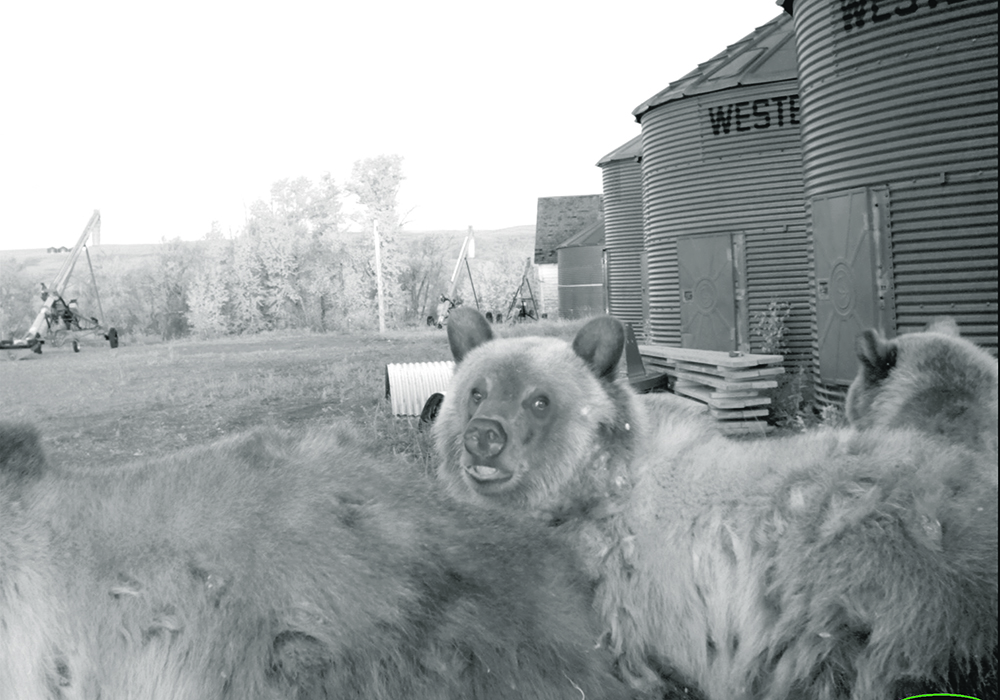Management practices on ranches are called key to mitigating damage from large carnivores on province’s Eastern Slopes
It can be a tough balancing act to maintain wildlife populations of large predators such as bears, cougars and wolves, while also maintaining the livelihoods of ranchers along Alberta’s Eastern Slopes.
For the Waterton Biosphere Reserve organization, key for producers living with predators is being able to set up ranches to mitigate interactions.
But fair compensation for lost animals is also a necessity.
Jeff Bectell, co-ordinator for the Carnivores and Communities program at Waterton Biosphere, said it’s difficult to manage wildlife interactions but it’s possible.
Grizzly and black bear, cougar and wolf populations are stabilized in the region and the group is making strides in reducing negative interactions, he said.
“From an environmental standpoint, those species are still around; we haven’t lost them so that’s good. I think we’re finding they are relatively secure, that maybe the province’s recovery plan is working,” he said. “The other good news is the community has been working with government in trying to manage the issues that come in co-existing with these things.”
Bectell, who ranches in the southwestern corner of Alberta that nestles up to the Rockies and contains several national and provincial parks, said it’s important to have those predators as part of the landscape.
“The negative side to the story is that there is conflict,” said Bectell. “We haven’t been able to nicely tie this whole thing up in a way everybody is happy and living together in harmony.”
Mitigation projects being taken by the program have been aimed at lessening the attractiveness of farms and ranches to potential predators.
Those efforts range from managing predation on dead stock through quick removal along with securing grain bins and silage from bears.
Bectell said the program has undertaken more than 100 projects involving 60 producers at 70 sites.
But fair compensation for livestock loss to predation is a big focus of the program, said Bectell.
Determining whether livestock have been killed by a predator, scavenged or even finding a missing animal in an area known to be frequented by bears, cougars and wolves to determine the cause of death can be difficult.
Bectell said those situations were part of recent talks with the Alberta government.
“I think it’s been a positive relationship between Waterton Biosphere, the community and the government in trying to work on these issues together,” said Bectell.
In a meeting earlier this month with Environment Minister Jason Nixon, Bectell said the community stressed the strides it has taken on mitigation efforts but also the need to devise a fair formula to determine livestock predation.
Between 200 and 300 cattle in southwestern Alberta are lost each year to predation but determining the cause of death of an animal carcass ravaged by scavengers is nearly impossible for officials.
“I think the community in this instance was interested in speaking with the minister about how do we handle it when losses to livestock are occurring and it’s not in a location we can always completely exclude predators?” he said.

Bectell said one solution is compensation using a multiplier that is based on the presumption that where there is one predator kill, there are likely others.
“What that is, when you have a confirmed kill, you’ll get paid for more than the one confirmed,” said Bectell. “It’s a way to make it auditable — you’ve still got to have that confirmed kill — but you multiply by a given factor for those animals that couldn’t be found or there was uncertainty where it couldn’t be confirmed.”
That factor in Alberta would be two-and-a-half times the value of a single lost animal, said Bectell of his organization’s recommendation.
He also stressed it’s in everyone’s interest to maintain large predator populations along the Rockies.
“We like the idea these animals are around and it’s all part of this functioning wild world,” said Bectell. “But it’s tricky to do it in a way that isn’t overly dangerous to people.”
















